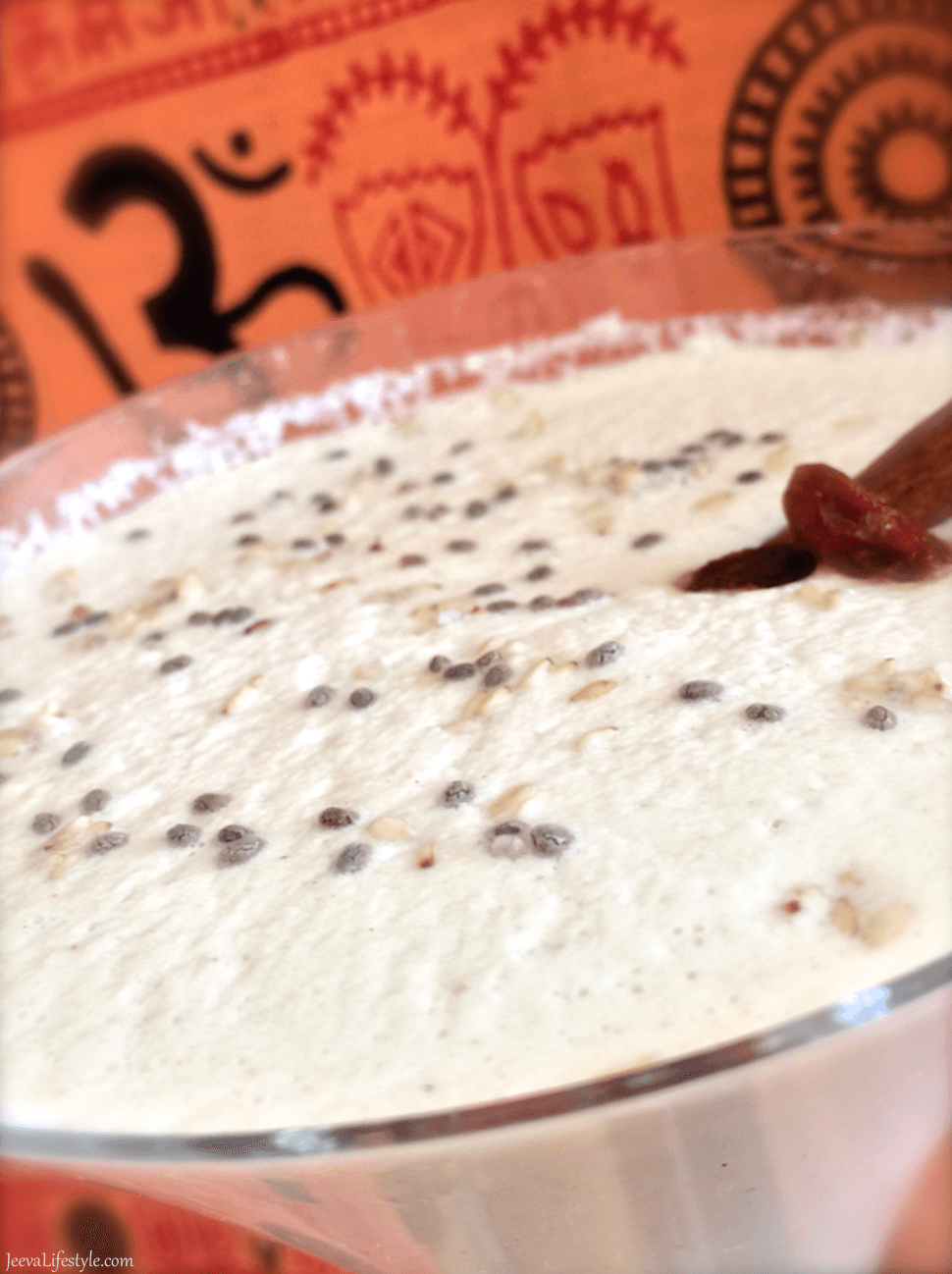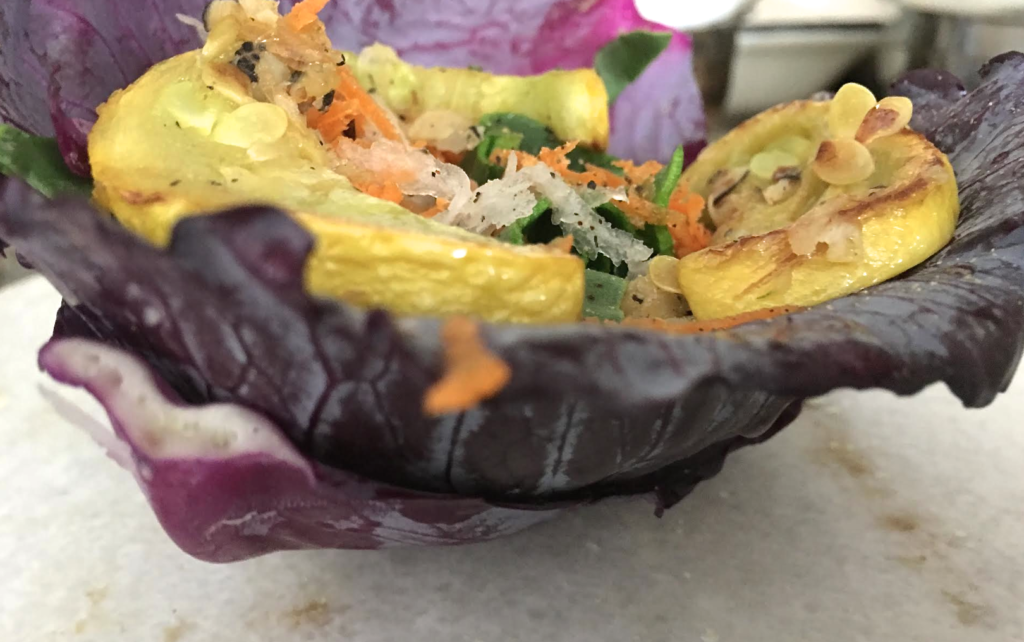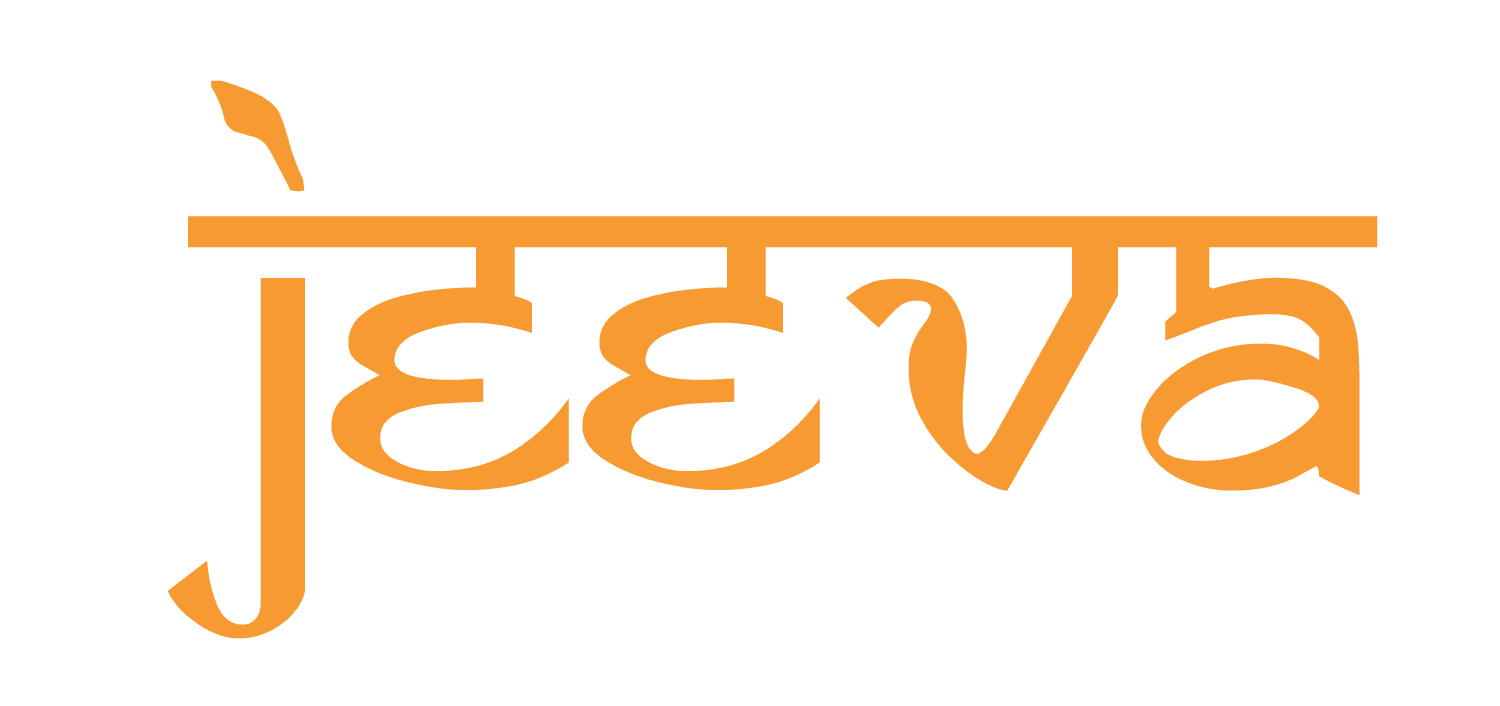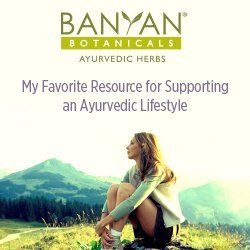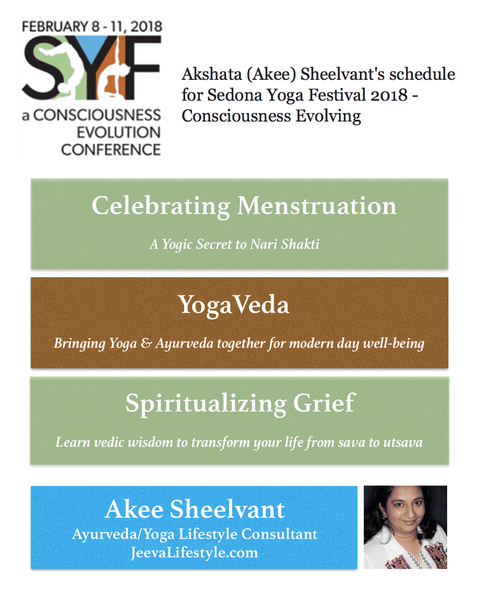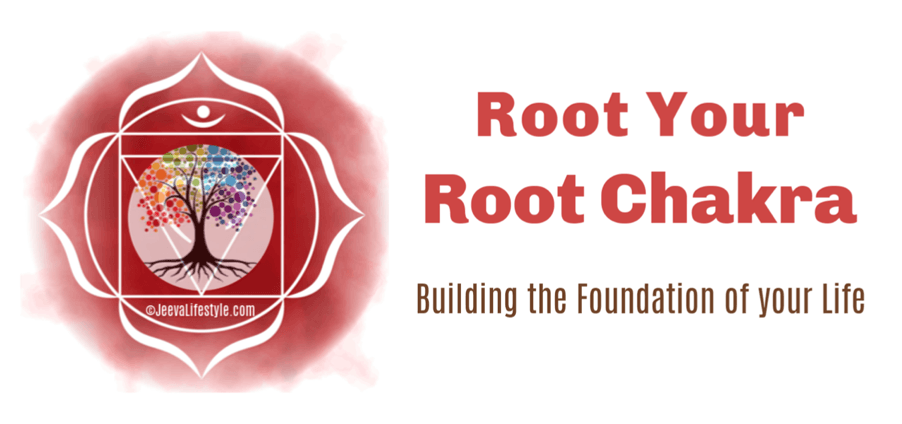Semi-Raw Kitchari
- By Akshata
- •
- 10 May, 2013
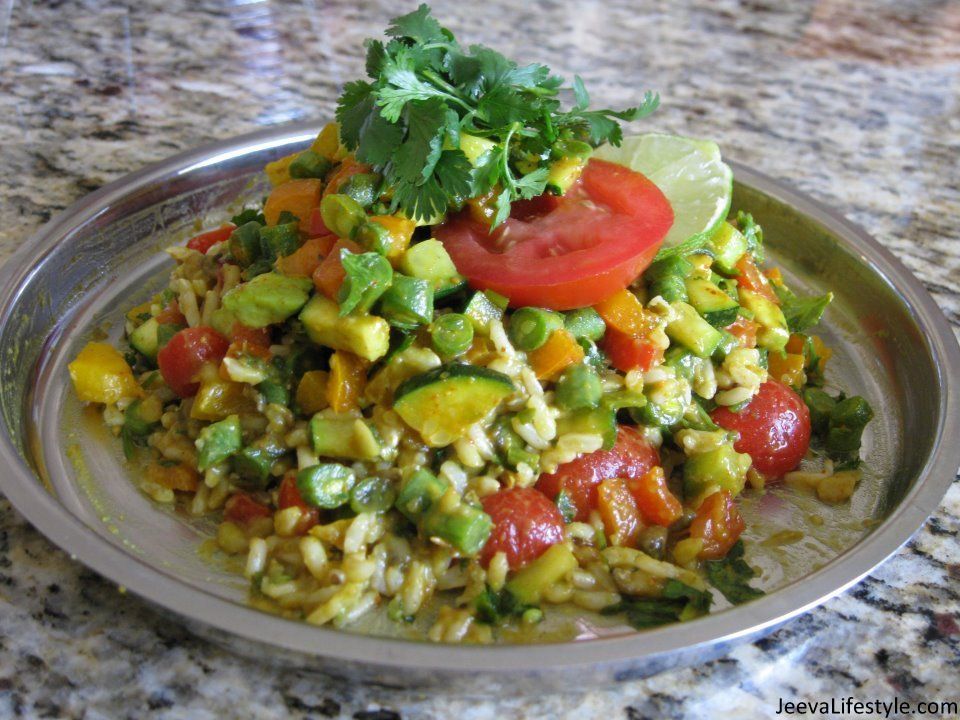
Kitchari (pronounced kitch-a-ree) in India means ‘mixture’ of two or more grains.Typically Kitchari is made by mixing white basmati rice and split yellow mung beans.This is “the” most popular Ayurvedic detox dish which has gotten huge popularity in recent years in US and other western countries.
My recipe is a mixture of brown rice (you could use quinoa or amaranth) and whole mung beans.This is different from the traditional kitchari and is tweaked to make it a complete power packed nutritious meal. Instead of white basmati rice, I prefer using brown rice and whole mung beans (with the green skin on them) instead of the split yellow mung beans. I like having it this way, it brings more nutrition to every bite and even makes the dish more flavorful and filling. And if this is not enough have taken the traditional kitchari to a whole new level by adding toppings of assorted raw veggies marinated in a spicy tangy curry sauce!!…Yum, yum, yum.
Kitchari has been a staple food in India for many, many years and is eaten mainly for its amazing taste and texture, the long list of health benefits is an added side benefit!
Some of the Benefits of Eating Kitchari
- Easily prepared
- Easily digested
- Nutrient rich
- Builds vitality and strength
- Balancing for all three (tridoshic) doshas
- Excellent detox dish
- Kitchari spices bring aroma, flavor and reawakens the digestive fire (agni)
- Cleanses toxins from bodily tissues
- Restores sagging energy
- Dish acts as a medicine to bring the body in a balanced state
Ayurveda recommends eating kitchari as a fasting food to cleanse and purify the digestive system from toxins. It’s called as fasting food because this dish gets easily digested, allowing the body to devote its energy to healing and balancing.
I love making and eating a big bowl of kitchari, its a very satisfying and relaxing experience for me. The fresh spices fill up my kitchen with an appetizing aroma and this naturally takes me to a higher alleviated energy!
I would like to give two options for making this dish –
- Authentic way (use fresh spices) this tastes the best!!
- Easier way – store bought kitchari kit or kichari mix

The easy option is discussed later. First, let me share with you how to make this the authentic way. I have observed in my own experience, there is an innate pleasure a sense of fulfillment that comes in touching, smelling, and tasting all the spices/herbs when you cook. Per Ayurveda, we ingest food through all our five senses: touch, taste, sight, sound, and smell and our good health is dependent on how well we maximize this aspect in our lives. I call this “mindful cooking” being in tune with what you are cooking sends out a signal to our digestive system – a.k.a. “the second brain” to get ready for a salubrious dish!
Let’s get started – this recipe serves 4-5 people
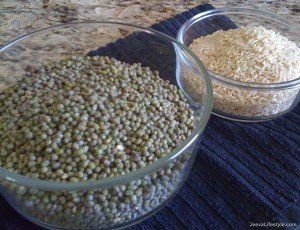
Prep for Brown Rice and Mung Beans: First take one cup of brown rice and two cups of green mung beans and soak them in water for about 5-6 hours. Soaking process is preferred as it makes kitchari consistency, nice and mushy and easy on the tummy to digest.
Why Mung Beans?
Ayurveda, says this is the easiest bean to digest and quickest to cook (far easier than any other beans like chickpeas, black beans). Mung beans are very nutritious and super detox food. Excellent source of protein and dietary fiber, and also contain vitamins A, C and E, phosphorous, magnesium, iron and calcium. Check out what Dr. Oz says on the benefits of mung beans.
Why Brown Rice?
I am using brown rice to retain more fiber, iron, and trace minerals. Also brown rice has a low GI index compared to the white rice.
Cooking with pressure cooker is pretty common in India, but almost forgotten in the western world. I know…they were a thing of the past but are gaining their lost popularity. Folks are re-discovering just how easy it is to make wholesome great tasting food in a short amount of time with less energy used in an airtight pot. I like using a stainless steel (no non-stick coating) airtight pot in which food can be cooked quickly under steam pressure. We all know the longer you cook food the more nutrients you lose. I am a big fan of using pressure cooker and here is my plug to convince you!
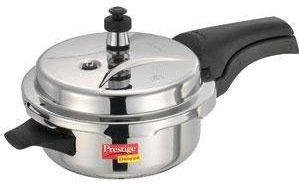
Cooking Brown Rice:
In the pressure cooker pan, take the soaked 1 cup of brown rice and add about 2 cups of water to it. Pressure cook this for about 4-5 whistles. Not comfortable using pressure cooker, you can cook this rice in a stockpot.
Let me confess its tricky cooking brown rice, its not the same as cooking white rice. It can get too dry or not cook through well. After trying out different brands, the one I like the most isLundberg’s Long Grain Brown Rice. The texture and flavor of this rice is amazing .
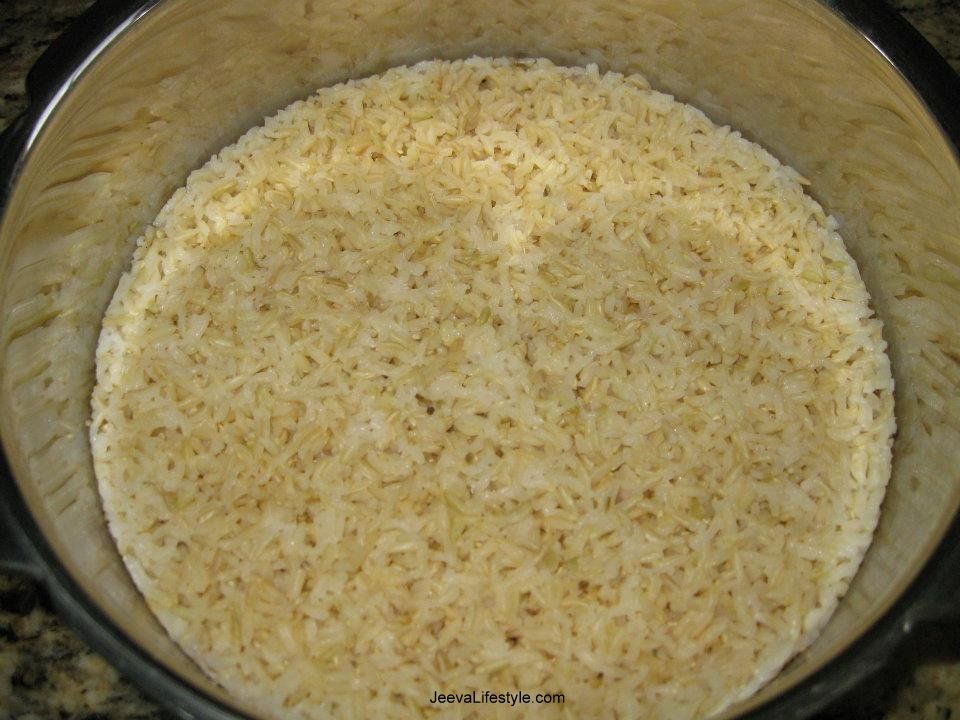
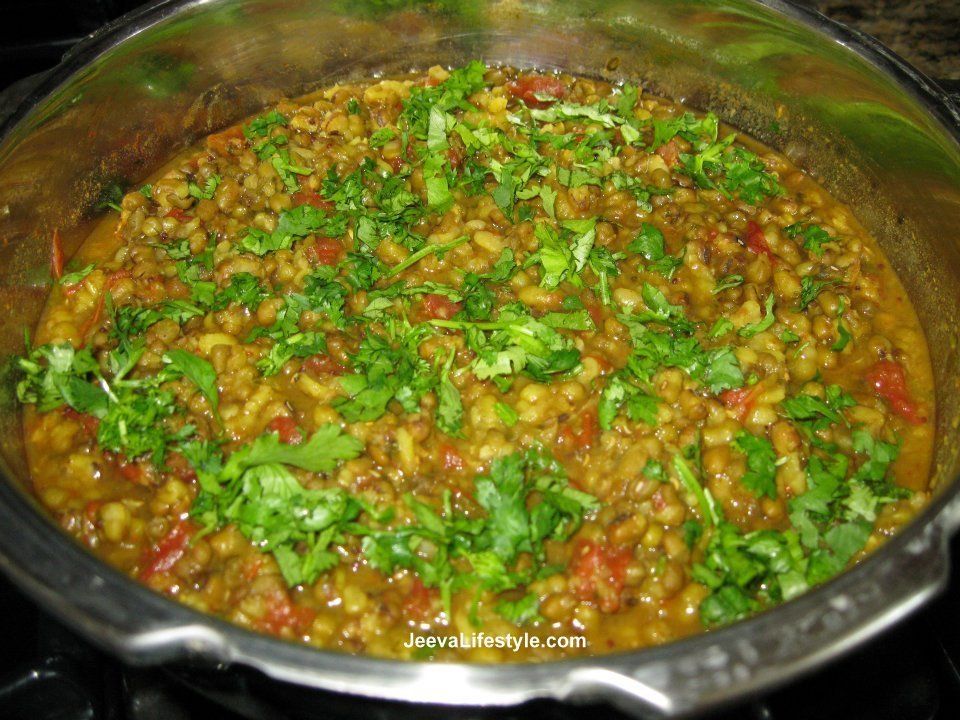
Ingredients for Mung Bean Curry/Stew:
1 tbsp Red chilli pwd
2 tsp Cumin seeds
2 tsp Mustard seeds
1 tsp Turmeric pwd
1 1/2 tsp Asafoetida pwd
Salt to taste
approx 3 cups of Water
2 cloves of finely chopped garlic
1 inch grated ginger
2 roma tomatoes chopped
few sprigs of cilantro
Place the pressure cooker pan on a medium heat. Add about 2 tsp of olive oil. Once the oil is heated add the cumin and mustard seeds, you will hear them splutter. Than add rest of the ingredients mentioned above and saute for couple of mins. Now, add 2 cups soaked mung beans to the pan and approx 3 cups of water. Pressure cook this for 5-6 whistles. This curry is done in less than 20mins!! Not using pressure cooker, cook this curry in a stockpot and follow the same method, this way might take little longer.
If you are opting for the easier option then instead of using all the above ingredients for mung curry, just use the kitchari mix and follow the same process of making mung curry.
This savory mung curry also goes well with India bread chapatti or naan. It also tastes good with pita bread.
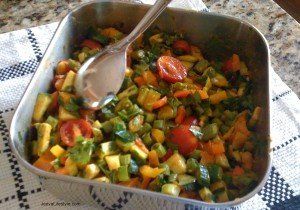
ngredients for Raw Veggie Topping Sauce: This sauce is incredibly delicious and super easy to make! The best thing about this sauce is it enables to bring out the bursting flavors of all the veggies yet does not give the ‘raw’ taste.
2 tsp Extra Virgin Coconut Oil
1 tsp Curry pwd
1 tsp Garlic pwd
1 tsp Cayenne pwd
1 1/2 tsp Turmeric pwd
2 tsp Lime juice
Salt to taste
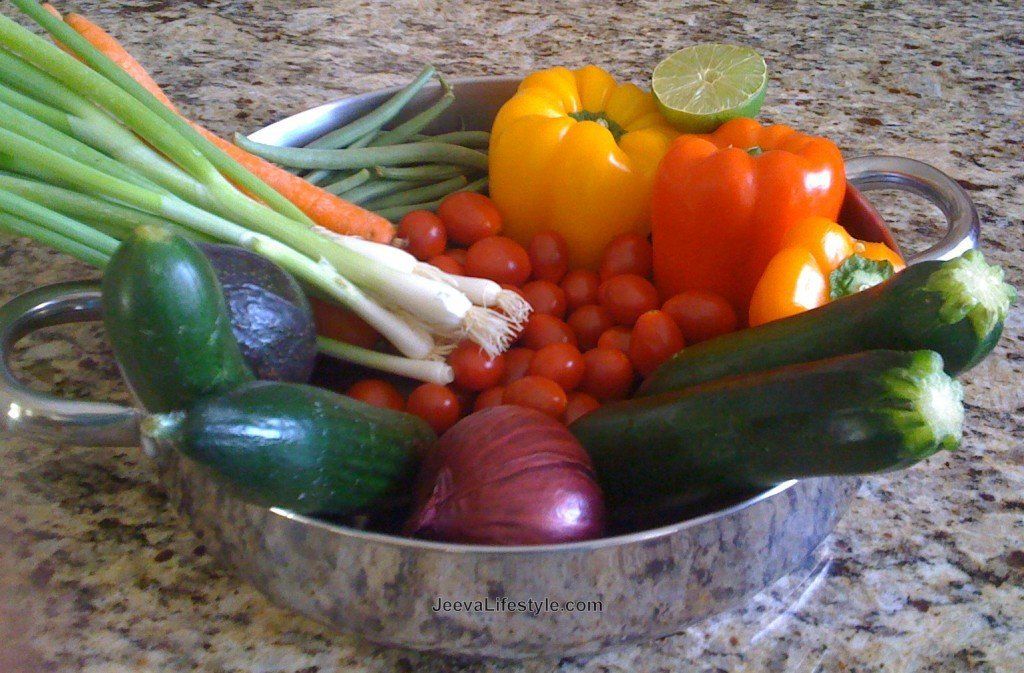
You can use any kind of veggies you like, I generally use – carrots, beans, tomatoes, bell peppers, avocados, onions, zucchini. For extra flavor you can add chopped cilantro to this.
Now comes the fun part, plating the dish! We have our brown rice ready, mung beans curry is bursting with aromatic flavors, and our raw veggie topping is perfectly marinated.
I like to have 1 part of brown rice to two parts of mung curry on my plate and then topped with generous amount of toppings. So, first goes the brown rice on the plate then top it with mung curry.
Lastly add good generous amount of raw topping to your plate. Voila its ready to dig in!!
This has been a gratifying experience sharing my very “first” recipe that started Jeeva facebook page in 2012.
Happy Eating! Honor your Jeeva!
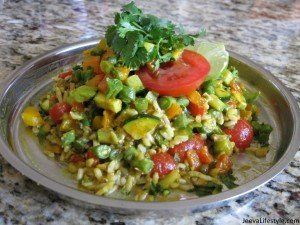
Sign up for our newsletter and receive a FREE e-book!
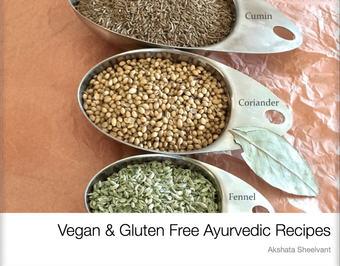
Contact Us
